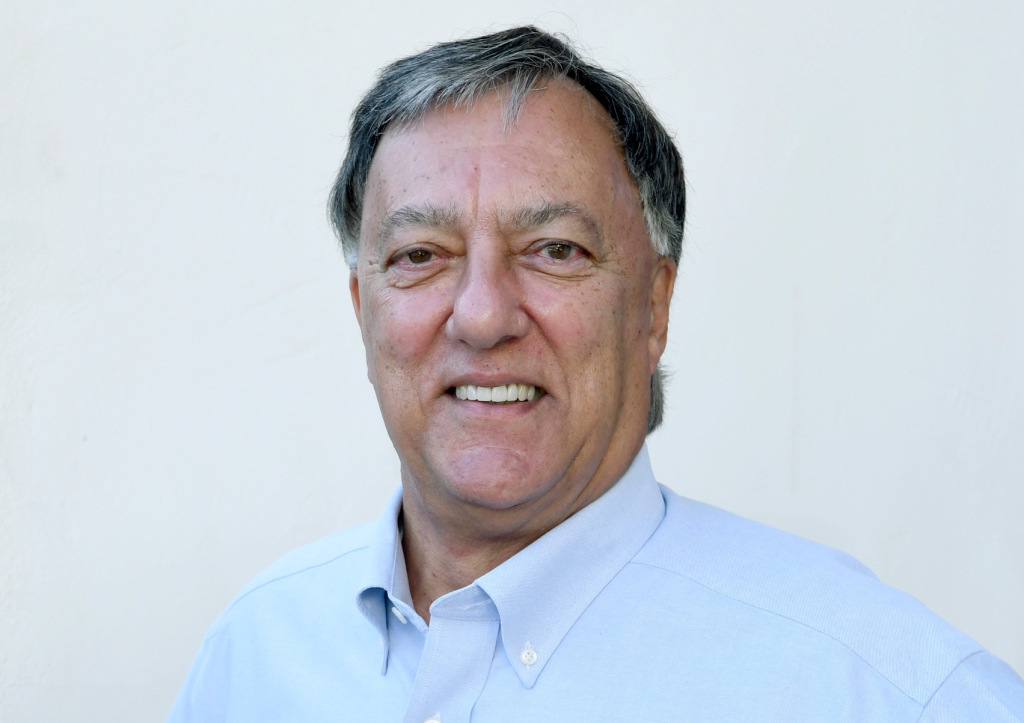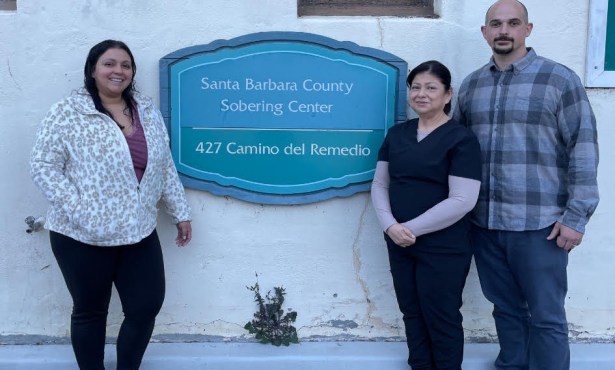Hal Conklin, Former Santa Barbara Mayor and Civic Visionary, Dead at 75
Conklin Died of Brain Cancer Complications at Serenity House on Friday

Hal Conklin, former Santa Barbara mayor, councilmember, environmental pioneer, arts advocate, and all-purpose civic visionary, died at Serenity House this Friday at the age of 75 from complications arising from brain cancer. Conklin took satisfaction that he would die in a facility formerly owned by the Community Environmental Council, an organization that he had helped found and lead in the wake of the 1969 Santa Barbara Oil Spill.
Conklin was first elected to the City Council in 1977 as part of a wave of environmental activists then seeking elected office. At the time of his election, the council was considerably more confrontational and rambunctious than it is now. Conklin recalled being accosted by one of his fellow councilmembers early on as a “goddamn Armenian.” From there, things would get only bumpier.
Conklin served on the council from 1977 to 1993. He ran for mayor and won in 1993, but his victory would prove short-lived when Judge William Gordon ruled the city’s term-limits ordinance precluded Conklin from serving as mayor. In the year he served, however, Conklin would be the only male to bang the gavel between now and the early 1980s.
Conklin would attempt a political comeback four years ago, when he ran for mayor, but would lose to Cathy Murillo, now waging a campaign for a second term. In that campaign, Conklin would repeatedly note that elected officials rarely lead anything. But if they were smart, they would allow the community to lead them. And if they were effective, he would add, they would help foster the community conversation out of which that leadership and collective vision would emerge.
As a political animal, Conklin was uncommonly effective, leading the charge to save Stearns Wharf back in the 1970s from mega development schemes that then appeared all but inevitable. About that same time, Conklin — who grew up in the Oakland area — played a key role in a widespread community effort to beat back a massive development plan that would have utterly transformed Cabrillo Boulevard, moving even the boulevard itself.
Conklin was never the least bit countercultural in style or vibe, but he played a significant role in starting the Community Environmental Council and served as one of its first directors. While there, he played a major role in launching the city’s first recycling program.
Conklin was infused with a mix of old-school spirituality, political ambition, and seriously ingenious practicality. He got things done. At a time when the Chamber of Commerce insisted the city’s tourism strategy began and ended with surf-and-turf ad campaigns, Conklin led the charge on behalf of a downtown revitalization effort rooted in the arts, both Capital A and otherwise.
He loved old movie houses, and one of his lifelong benefactors was Bruce Corwin, the scion of the Metropolitan movie theaters. Conklin also pushed hard to pour over a million of the city’s dollars into redevelopment of what’s now the Granada Theatre’s plush interior.
He was up to his elbows in the planning and public outreach project that gave rise to Paseo Nuevo and the new parking lots that have anchored and defined downtown Santa Barbara for the past 30 years. Likewise, he made sure public funds were made available to get the Lobero Theatre the seismic upgrade it needed to stay alive. Conklin was the one who envisioned a State Street divvied up into three distinct but overlapping zones — the arts district, the retail trade district, and the bar zone.
As a planning wonk, Conklin could hold his own with anyone and played a critical role in the successful effort to restrict new commercial development to not outstrip the city’s very limited housing supply. To that end, it would be City Hall that would draft what became known as Measure E in the late 1980s, but it was the community — the voters — who would ratify it at the ballot box, but only after a public outreach effort that was both exhaustive and exhausting.
In person, Conklin bubbled over with effervescent delight; he didn’t get angry so much as he got amused. He didn’t tell old war stories — drenched in the minutia of Santa Barbara’s backroom politics — so much as he lived them, and he could recount them — decades later — with detail, astonishment, and glee. With Conklin’s passing, Santa Barbara’s living, breathing institutional memory just experienced a massive stroke.
But as a political operator Conklin was canny, shrewd, effective, and hard to pin down. No one ever doubted Conklin’s acumen or inventiveness. Many, however, wondered which side he was really on.
After Conklin was stripped of his mayoral post, he took a financially secure gig working for Southern California Edison as a lobbyist in Sacramento. But he never lost his taste for Santa Barbara politics and ran for mayor five years ago to tend to what he considered some seriously unfinished business.
Politics had changed considerably in the intervening years, with political parties playing a much larger role than during his term in office. Conklin, then 70, appealed to a wide swath of middle-of-the-road voters disaffected with the new politics. Good ideas and past accomplishments were not enough, however, and Conklin failed to emerge from the pack in a five-way race. On Election Night, one would have not known Conklin had lost as he vowed to make his presence felt by waging a war of ideas in the months and years to come.
He worked with a number of civic projects looking to bring the community together in civil discussion, most notably his work with Todd Capps on the Common Table Foundation. A statement issued by the Capps family on Friday afternoon said, “We love Hal because he was a seeker. His inquisitive, hopeful, and open mind and heart led him to foster connections, build community, and be guided by compassion…. Hal Conklin is synonymous with the spirit of Santa Barbara — which will live on.”
Conklin also teamed up with downtown property owner Richard Berti and a host of other downtown moguls and business leaders to launch the Santa Barbara Leadership Group. Some saw the new organization as a cudgel to put the fear of God into elected leaders; others saw it as a platform for Conklin to plot the second coming of his political second coming. Mostly, it was a vehicle for public discussion and debate over issues near and dear to downtown interests and the political class.
If some of those conversations were blunt, tough, and uncomfortable, many were not and allowed, for example, homeless advocates to meet face to face — and later through Zoom — many of the property owners most indignant and upset about the presence of homeless people on State Street.
Conklin was forever cagey whether he intended to run again for mayor, always insisting he would only if the current council regime didn’t get its act together. He would not get that chance, however, suffering a serious medical setback last summer that would be diagnosed as brain cancer.
Conklin endured the treatments with a combination of good cheer and evident astonishment at how lucky he was to still be alive. At times, he was giddy with gratitude and almost desperate in his exuberance over life’s possibilities. His body will be interred in the Santa Barbara Mission, and a public celebration of his life will be scheduled for a later date.
UPDATE: This story was updated to mention Conklin’s work with the Common Table Foundation and include a statement from the Capps family. Also, Conklin served as mayor in 1993, the only male between now and the early 1980s, and ran again in 2017; it was Measure E — not A, as originally reported — that was drafted in the late 1980s to restrict new commercial development; and, rather than the highway being moved in a massive development, moving Cabrillo was part of that proposal.
Support the Santa Barbara Independent through a long-term or a single contribution.



